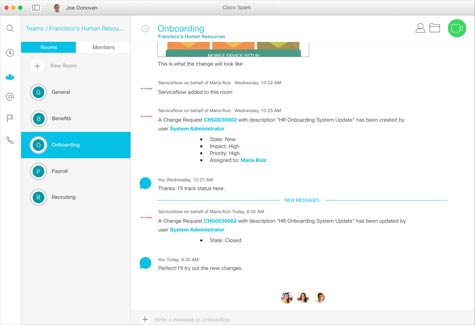As part of a plan to make it simpler to hold both ad-hoc and more structured meetings using the Cisco Spark collaboration platform, Cisco announced this week that it has acquired Heroik Labs to gain access to a set of Worklife meeting tools.
Jens Meggers, senior vice president and general manager for the Cloud Collaboration Technology Group at Cisco, says that as the centerpiece of Cisco’s overall cloud collaboration strategy, the Cisco Spark cloud service will be used for both ad-hoc meetings and meetings that have more formal agendas where notes are taken and action items are created.
Cisco plans to continue to provide access to other collaboration services such as Webex. But the Cisco Spark service will provide a richer experience encompassing video and multiple other forms of unified communications.
Meggers adds that, thanks to an alliance with IBM, various forms of cognitive computing and advanced analytics delivered via the IBM Watson platform will be imbued in the service.
At the same time, Cisco is counting on open application programming interfaces (APIs) to help make Spark communication services pervasively available via a wide variety of applications. Salesforce, for example, has agreed to use those APIs to make Cisco Spark natively available across its suite of cloud applications.
A little further on down the road, Meggers says, Cisco will be adding support for both augmented and virtual reality technologies that end users will be able to employ within the context of the suite of Cisco Spark collaboration applications.
As all forms of communications and collaboration move into the cloud, the days when enterprise IT organizations spend massive amounts of time and effort trying to deliver similar types of services via on-premises networks appear to be all but over. In fact, there’s no shortage of these types of services. But perhaps more importantly, the existence of these capabilities in the cloud also means that far more end users are about to benefit from them than what was ever economically feasible on premise.




